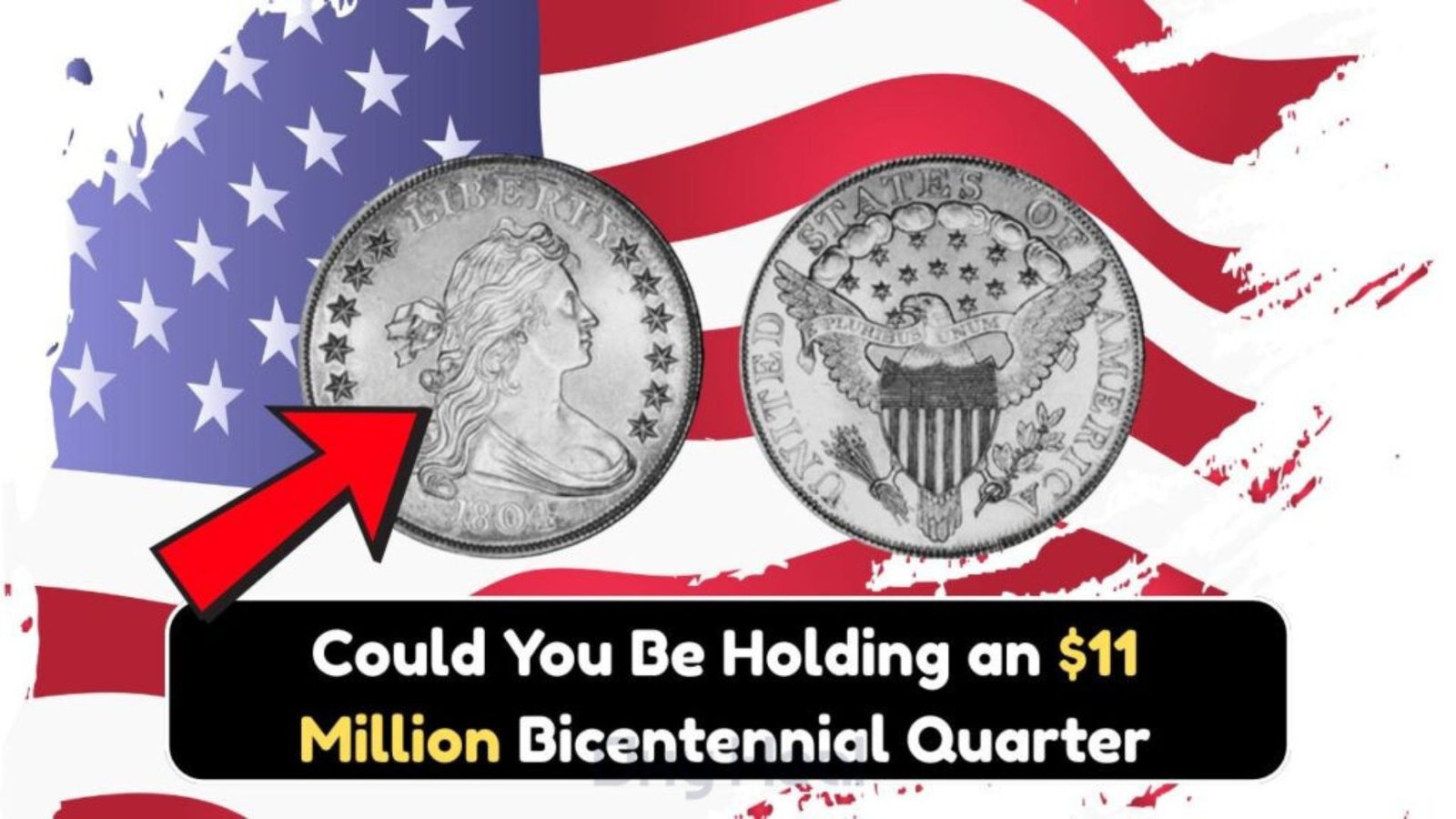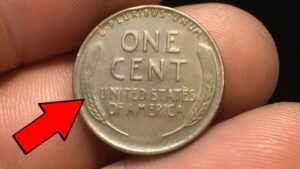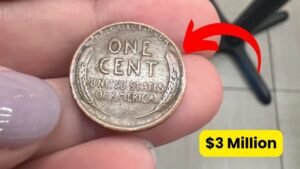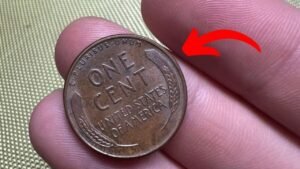Hold onto your coins, folks! The 1976 Bicentennial Quarter is making waves in 2025, with some rare versions rumored to be worth millions. This guide dives into the thrilling world of coin collecting, revealing how to spot these treasures. Get ready for a fun ride through history, numismatics, and the chance to strike it rich!
Why the Bicentennial Quarter Is a Big Deal in 2025
The Bicentennial Quarter, minted in 1975 and 1976, was the U.S. Mint’s way of throwing a massive party for America’s 200th birthday. With its iconic colonial drummer boy design and dual “1776-1976” date, it’s a standout in U.S. coin history. But here’s the kicker: while over 1.6 billion were minted, a tiny fraction of these quarters are so rare they could make you a millionaire. As we approach the nation’s 250th anniversary in 2026, interest in these coins is skyrocketing, making 2025 the perfect time to check your change.
A Blast from the Past: The Coin’s Historical Vibes
Picture this: it’s 1976, disco is king, and the U.S. is decked out in red, white, and blue for the Bicentennial bash. The U.S. Mint rolled out these quarters to celebrate, featuring George Washington on the front (obverse) and a colonial drummer on the back (reverse), surrounded by 13 stars for the original colonies. The dual date “1776-1976” screams patriotism. Most of these coins were meant for everyday use, but a few special ones slipped through with quirks that collectors now obsess over.
Minting Magic: Where Were They Made?
The Bicentennial Quarters came from three U.S. Mint locations, each leaving a tiny clue on the coin:
- Philadelphia (P or no mint mark): Pumped out over 809 million coins. These are the most common, but rare errors can make them valuable.
- Denver (D): Minted around 860 million. Like Philly, most are worth face value unless they have unique flaws.
- San Francisco (S): Produced about 22 million, including 11 million uncirculated 40% silver coins and proof sets. These are the VIPs of the Bicentennial world, often fetching higher prices.
What Makes a Bicentennial Quarter Worth Millions?
Not every quarter is a jackpot, but certain traits can send their value into the stratosphere. Here’s what to look for:
1. Silver Content: The Shiny Secret
Most Bicentennial Quarters are “clad,” made of a copper-nickel sandwich (91.67% copper, 8.33% nickel). But San Francisco minted special 40% silver versions for collectors, weighing 5.75 grams compared to 5.67 grams for clad coins. These silver beauties, especially in pristine condition, can sell for hundreds or thousands. Rumor has it, a few were accidentally struck on 90% silver planchets, and those could be worth millions.
2. Minting Errors: Happy Accidents
Minting mistakes are like finding a golden ticket. Some Bicentennial Quarters have:
- Double Die Errors: Letters or numbers look shadowed due to a misaligned die. A 1976-D double die quarter sold for $201,000 at auction!
- Off-Center Strikes: The design is misaligned, sometimes missing chunks of the image.
- Wrong Planchet Errors: Quarters struck on dime or nickel planchets are super rare. One sold for $9,200 in 2020.
3. Condition: The Mintier, the Merrier
Coin condition is graded on the Sheldon Scale (1 to 70). A quarter in MS67 (near-perfect) or higher can fetch big bucks. For example, an MS68 1976-D clad quarter sold for $6,462.50. Silver proofs graded PR70 (perfect proof) are even more valuable, with some hitting $19,200 at auction.
4. Rarity and Hype
The hype around rare Bicentennial Quarters is real, fueled by stories of coins worth $11 million or even $250 million. While these figures are often exaggerated, they reflect the excitement of finding a one-of-a-kind coin, like a prototype or a unique error.
How to Spot a Rare Bicentennial Quarter
Ready to play coin detective? Grab a magnifying glass, good lighting, and your quarters. Here’s your step-by-step guide:
Step 1: Check the Mint Mark
Look near George Washington’s ponytail for a tiny “P,” “D,” or “S.” San Francisco (“S”) coins are your best bet for value, especially if they’re silver.
Step 2: Weigh It
Use a digital scale. A clad quarter weighs 5.67 grams; a silver one is 5.75 grams. If it’s heavier and lacks a copper stripe on the edge, you might have a silver treasure.
Step 3: Hunt for Errors
Inspect for double dies (blurry letters or numbers), off-center designs, or odd shapes. Compare your coin to online images of known errors.
Step 4: Assess Condition
Look for scratches, wear, or discoloration. Uncirculated coins with sharp details are worth more. If it’s shiny and flawless, you’re on the right track.
Step 5: Get It Appraised
Found something special? Don’t clean it—cleaning can ruin value. Take it to a professional grader like PCGS or NGC for authentication and grading.
Preserving Your Potential Fortune
If you’ve got a rare quarter, treat it like a museum piece. Store it in a coin holder made of inert materials (like Mylar or plastic flips) to prevent scratches. Keep it in a cool, dry place away from humidity. Avoid touching the surface—use cotton gloves to handle it. Proper storage can keep your coin’s value intact for years.
The 2025 Coin Collecting Craze
As America gears up for its 250th anniversary in 2026, Bicentennial Quarters are stealing the spotlight. Coin shows, online forums, and social media are buzzing with collectors swapping tips and bragging about finds. Some say the hype is overblown, with “fake news” articles inflating values, but the thrill of the hunt keeps numismatists hooked. Whether you’re a newbie or a seasoned collector, now’s the time to dive in.
Top Bicentennial Quarters to Watch in 2025
Here’s a quick rundown of some high-value Bicentennial Quarters, based on recent auction data:
| Coin Type | Mint Mark | Condition | Sale Price | Year Sold |
|---|---|---|---|---|
| Silver Proof | S | PR70 | $19,200 | 2019 |
| Double Die Obverse | D | MS67 | $201,000 | Unknown |
| Struck on Dime Planchet | Unknown | MS65 | $9,200 | 2020 |
| Clad Regular Strike | D | MS68 | $6,463 | 2017 |
| Silver Proof Deep Cameo | S | PR69 | $2,760 | 2007 |
Conclusion: Your Treasure Hunt Starts Now!
The Bicentennial Quarter is more than a coin—it’s a time capsule of American pride and a potential ticket to riches. While most are worth just 25 cents, a rare few could change your life. In 2025, with the 250th anniversary of independence on the horizon, the hunt for these treasures is more exciting than ever. So, raid your piggy bank, check your change, and join the coin-collecting adventure. Who knows? Your next quarter could be worth millions!
FAQs About Rare Bicentennial Quarters in 2025
Q: How do I know if my Bicentennial Quarter is valuable?
A: Check the mint mark (“S” is best), weigh it (5.75 grams for silver), and look for errors like double dies or off-center strikes. Get it appraised by PCGS or NGC.
Q: Are all 1976 Bicentennial Quarters worth a lot?
A: No, most are worth face value (25 cents). Only those with silver content, minting errors, or high grades (MS67+) can be valuable.
Q: Where can I sell a rare Bicentennial Quarter?
A: Try reputable auction houses like Heritage Auctions, eBay (with grading), or local coin dealers. Always get it graded first to maximize value.
Q: Why are some Bicentennial Quarters worth millions?
A: Extreme rarity, like 90% silver planchets or unique errors, combined with perfect condition and collector demand, drives sky-high prices.
Q: Can I clean my Bicentennial Quarter to make it worth more?
A: Never clean a coin! Cleaning can damage the surface and drastically reduce its value. Leave it as is and consult a professional.




